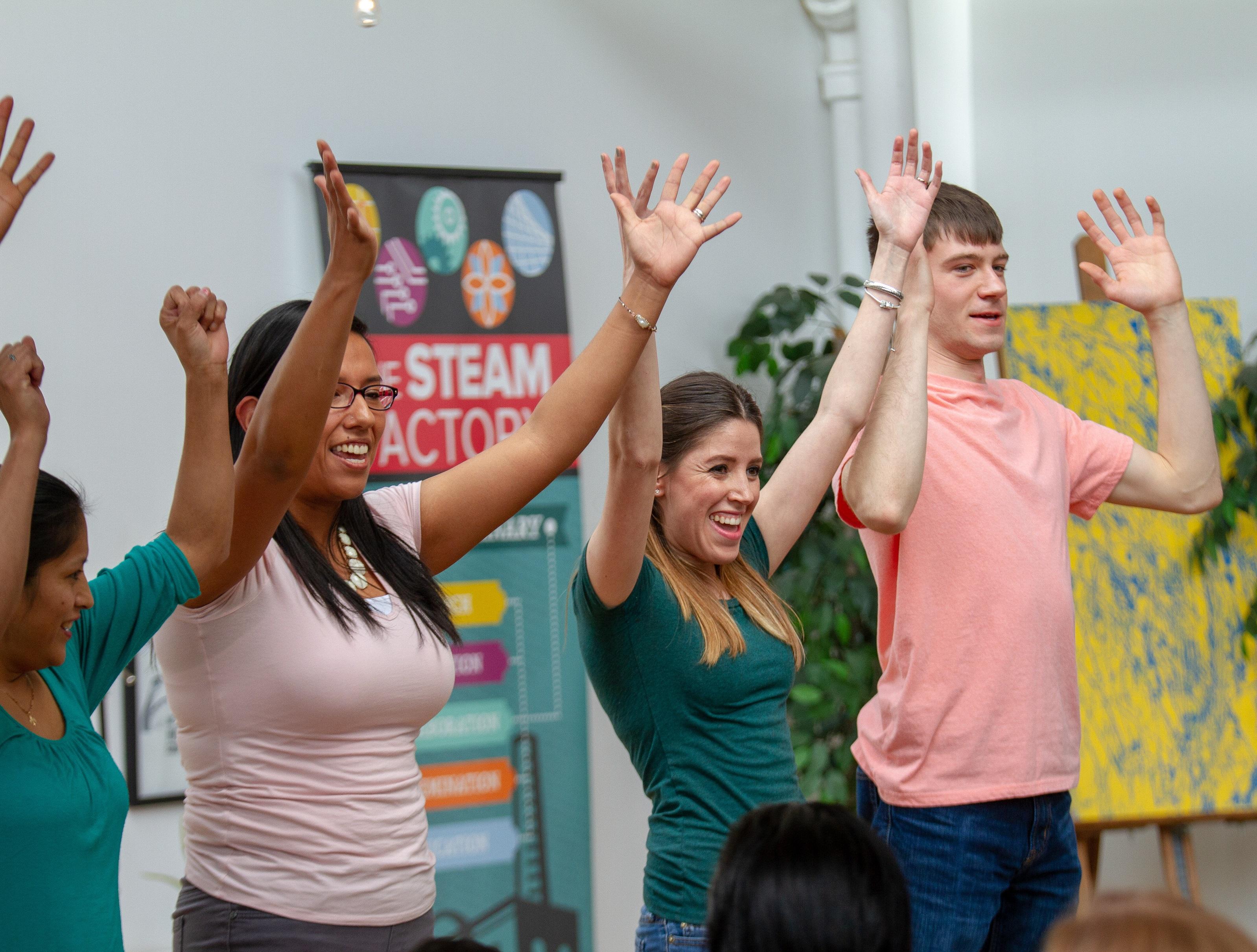Leading through Activating Dialogue

Key Takeaways:
- Folks with dominant identities/voices often fill the space in discussions.
- Opening rituals such as check-ins can foster community, even in a single meeting.
- Activities of varying risk levels (from silent writing as dialogue to sharing points of view by placing one’s self on a continuum) invite folks to listen and share across difference.
I am standing in front of a room of community leaders, and I ask them what they want to change in their neighborhoods. There is a long pause and then a few outspoken (usually white cisgender male) individuals dominate the conversation, happy to share their opinions. Instead of turning into dialogue, it feels as though we are hearing a few voices and then getting stuck.
This scenario may be familiar to folks who want to engage groups in dialogue or facilitate collaborative action. How can we set up space for more voices to be heard and for nuanced conversations that complicate issues?
My own training in applied theatre and drama-based education remind me that discussions can be active and embodied. Making discussions active can disrupt hierarchies that prevent folks from sharing/being heard.
Katheryn Dawson and Bridget Lee outline several strategies in their book Drama-Based Pedagogy (2018) that I often use in my facilitation work. In my experience, these activities build space for diverse perspective sharing, active listening and disrupting binary ideas. In this blog entry, I will illustrate some tools you might draw on and employ in your own contexts.
Check-Ins
When beginning with a group (new or established), I do a check-in. This could be as simple as a temperature check by asking people to indicate with their thumbs (up, down or anywhere in-between) how they’re coming into the room that day. It could also be more in-depth — like inviting each person to share a high/low for their week or day. I always advise folks that they can say “pass” if they don’t want to share and we will come back to them. They can also just say their name and nothing more. These check-ins can go a long way toward building community, even just as an invitation for everyone’s voice to be heard in the room.
Poster Dialogue
Poster dialogue can be an effective way to get a conversation started. It gives everyone time to think on their own before dialoguing with the group. For poster dialogue, the facilitator places large poster papers with prompts around the room, provides everyone with a marker and invites them to add their thoughts to the posters. I encourage them to do this silently and circle back around to see what others have written, adding checks or stars where they agree. After everyone has a chance to be in conversation through writing, we begin the verbal dialogue. I read out what’s on the posters and use that as a launching point.
Sample prompts: I wish people gave more attention to…; Our neighborhood assets include…; I wish people knew ____ about my neighborhood.
Vote From Your Seat
This is an exercise that can get at nuance through voting instead of yes/no. I simply ask the group to raise their hands on a spectrum of agreement — all the way up being “I totally agree” and all the way down being “I totally disagree.” I then may ask folks to turn to someone close by and talk about why they positioned their hand where they did. Then, pairs can report back to the group with salient points from their conversations. They don’t have to agree to be in conversation!
Exploding Atom
Exploding atom is the most active of these strategies for dialogue. I invite everyone to stand in a circle, and I then place my water bottle at the center. I explain that everyone has their own continuum like a spoke on a wheel and that where they are positioned, currently, signifies that they disagree with a statement. If they agree, they can move and stand closer to the center (water bottle). I then, make bold statements that have room for disagreement such as “The best way to learn is to teach yourself.” Inviting participants to turn and talk to someone who is close to them or far away from them can, again, encourage deepening dialogue across difference.
Takeaways
Strategies for activating dialogue, such as the ones I have described here, have allowed me to create more invitations for engagement in the groups I work with. Employing these strategies has opened space for more balanced dialogues with multiple perspectives while encouraging folks who may not otherwise chime-in to share their thoughts in lower risk ways than speaking in front of a room of people.
For more examples and videos of these strategies, check out https://dbp.theatredance.utexas.edu/teaching_strategies/activating_dialogue_strategies
To learn more, visit https://u.osu.edu/bethestreet
Works Cited:
Dawson, K., & Kiger, L. B. (2018). Drama-based Pedagogy: Creative Learning Across the
Curriculum. Bristol: Intellect.
Activating Dialogue Strategies. (n.d.). Retrieved from https://dbp.theatredance.utexas.edu